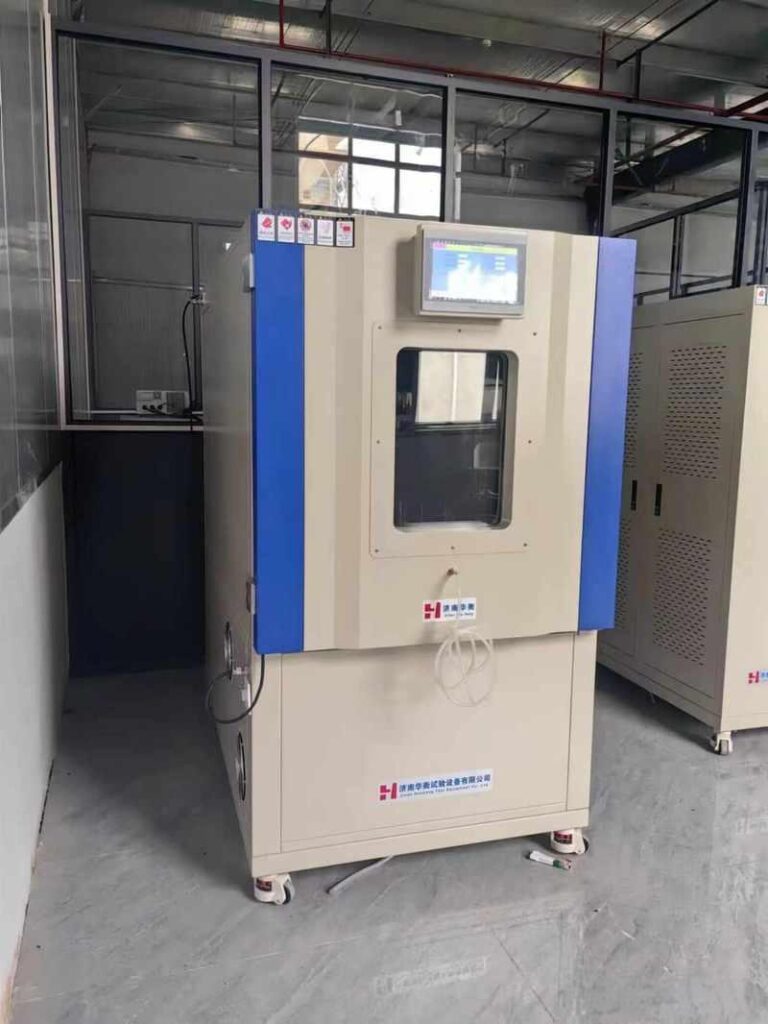Testing formaldehyde emissions in plywood and similar materials is essential to ensure compliance with global standards and to minimize health risks. Various standardized methods are employed to measure formaldehyde emissions accurately. Here’s an overview of the key testing methods:

1. Chamber Method (EN 717-1)
- Overview: This is the most widely accepted and accurate method for measuring formaldehyde emissions.
- How It Works:
- A wood-based panel sample is placed in a controlled climate chamber.
- The air inside the chamber is monitored to measure the concentration of formaldehyde released over time.
- Volume Options:
- Small chamber (e.g., 1 m³): Suitable for smaller samples.
- Medium chamber (e.g., 12 m³): Used for larger panels.
- Large chamber (e.g., 28 m³): Best for testing large-scale production materials.
- Applications: Primarily used for certifying plywood and panels to meet regulatory standards like CARB, TSCA Title VI, and E1 or E0 grades.
- Advantages: Highly precise and mimics real-world conditions.
2. Perforator Method (EN 120)
- Overview: Measures the amount of formaldehyde released from wood veneers when subjected to a heated solvent (typically toluene).
- How It Works:
- A sample is immersed in toluene, and the formaldehyde extracted into the solvent is measured.
- Results are expressed in milligrams of formaldehyde per 100 grams of dry panel.
- Applications: Often used in Europe to determine compliance with E1 and E2 grades.
- Advantages: Quick and cost-effective for quality control in manufacturing.
3. Gas Analysis Method (EN 717-2)
- Overview: A smaller-scale alternative to the chamber method.
- How It Works:
- A sample is placed in a sealed container, and the air in contact with the sample is analyzed for formaldehyde concentration.
- Applications: Used for routine testing and screening, especially when chamber testing is not feasible.
- Advantages: Faster than the chamber method and suitable for smaller operations.
4. Flask Method (EN 717-3)
- Overview: A chemical method to measure formaldehyde content in wood or wood-based panels.
- How It Works:
- A sample is placed in a sealed flask with water and heated.
- Formaldehyde released into the water is measured through chemical titration or spectrophotometry.
- Applications: Commonly used for quality control and research purposes.
- Advantages: Simple and inexpensive compared to other methods.
Comparison of Methods
| Method | Accuracy | Cost | Time Required | Applications |
|---|---|---|---|---|
| Chamber (EN 717-1) | High | Expensive | Longer | Certification and regulatory compliance |
| Perforator (EN 120) | Moderate | Moderate | Short | Quality control, routine manufacturing checks |
| Gas Analysis (EN 717-2) | Moderate | Moderate | Short | Screening and smaller-scale operations |
| Flask (EN 717-3) | Low to Moderate | Inexpensive | Short | Research and basic quality assessment |
Conclusion
Each testing method has its specific advantages and use cases, depending on the precision, cost, and application requirements. While the chamber method is the gold standard for regulatory purposes, the perforator and gas analysis methods are more practical for routine quality control. The choice of method should align with the intended application and regional formaldehyde emission standards.
